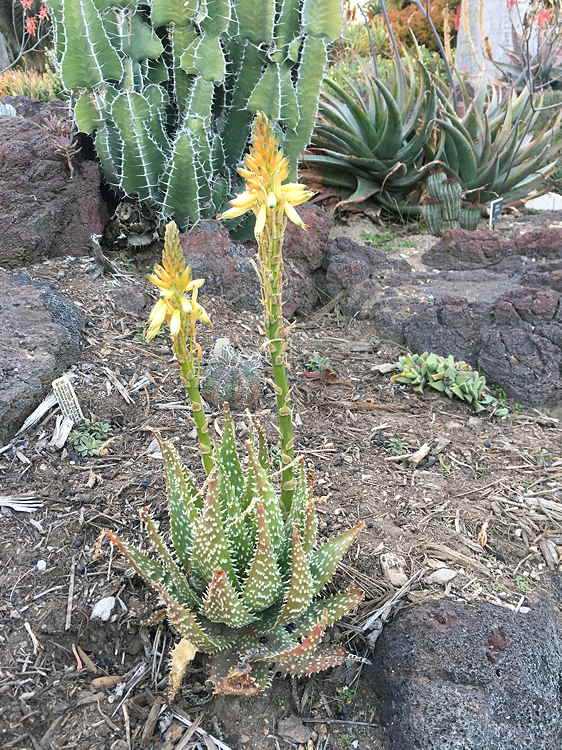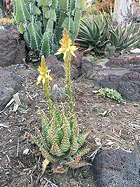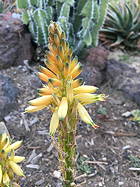Bill Baker (1959–2009) was well known in the C&S community as well as among bromeliad fanciers. He had broad botanical interests and knowledge and an appreciation for science as well as the aesthetic pursuits of landscaping and horticulture. His Reseda, CA, nursery was the source of many rarities including bromeliads, epiphytic cacti, haworthias, Euphorbia milii hybrids, and more. He was an active explorer in Mexico and South America and introduced many new taxa to science and cultivation, sharing many of his Echeveria and epiphytic cactus collections with Myron Kimnach, director of the Huntington Botanical Gardens from 1962 to 1987, who formally described some of these. Bill was also an active, though casual, hybridizer, accepting the help of hummingbirds and other pollinators in his open shade houses. Among his selections was an open hybrid of Aloe humilis (perhaps with Aloe pratensis?), which acquired both species’ relatively small stature and extremely toothy leaves. Like many hybridizers, Bill seemed to have trouble deciding which was the best for introduction, sometimes choosing more than one. Such is the case with this hybrid. Three seedlings were virtually identical vegetatively. They look like more robust versions of the seed parent, with rosettes to 6” or so of gracefully curving leaves completely covered with large white teeth. These were similar enough that they were indistinguishable when not in flower, so he called them all by the cultivar name ‘Jaws’ but distinguished them as I, II, and III. Unfortunately, these homonyms have led to some confusion as to just what Aloe ‘Jaws’ is, since one or two have yellow flowers and another one (or two?) has orange flowers. The other siblings may be worthy of cultivation but to avoid confusion should be given distinct cultivar names. For this offering, we formally apply the name ‘Jaws’ to a yellow-flowered clone, HBG 118307, which we have propagated by tissue culture. $12.

Published in the Cactus and Succulent Journal, Vol. 94 (2), Summer 2022


